The truth of Chinese coffee and the hidden rules of coffee investment what is the real standard of boutique coffee?

Professional coffee knowledge exchange more coffee bean information please follow the coffee workshop (Wechat official account cafe_style)
Has the best era of coffee market and coffee consumption in China really come?
According to a survey conducted by Pindu think tank, the current size of China's coffee market is about 110 billion, which is far from the overall market volume of 1 trillion. According to the old saying, the take-off of China's coffee market has a long way to go.
Throughout the world, Starbucks has been overtaken as a target by coffee newcomers countless times. in China's vast market, the rise of Internet coffee brands has made Starbucks an imaginary enemy of the standard, which is an interesting phenomenon. it is not only a declaration of war by new brands against old brands, but also a challenge to the original market pattern by new consumption patterns.
But in fact, has China's coffee war begun? What are the real formats of China's coffee market? What practical changes does the new retail bring to the coffee industry? Should boutique coffee be quality or marketing priority? What are the hidden rules for investment in the coffee industry?
On July 18, 2018, Pindu [Business x Enablement] launched the third coffee industry wave theme salon in Shanghai. At the scene, senior figures in the coffee industry, including Starbucks China's first store manager Ding Lei, Bruno Coffee General Manager Li Fei, Lai Cup Coffee CEO Zhou Peijie, Shanghai Shengyun Industrial Coffee Brand Manager Zhu Kevin, and Lang ran Capital founding partner Pan Yuxin, exclusively shared the pain points and opportunities of China's coffee market.
A probe into China's Coffee Market from the change of Starbucks
With the arrival of the new retail era, from instant coffee to professional coffee chains, to boutique coffee, and then to the rise of Internet coffee brands, China's coffee market ushered in the third wave of development.
With the opening of Starbucks' first China store in Beijing in 1999, Ding Lei started his 28-year Starbucks career as the manager of Starbucks's first store in China, and later served as the first regional manager and former regional director of Greater Northeast and Greater China respectively. He believes that the characteristics of the third coffee wave in China's coffee market are mainly reflected in the use of capital power and Internet technology, coupled with new retail concepts, to reform and innovate the coffee industry.
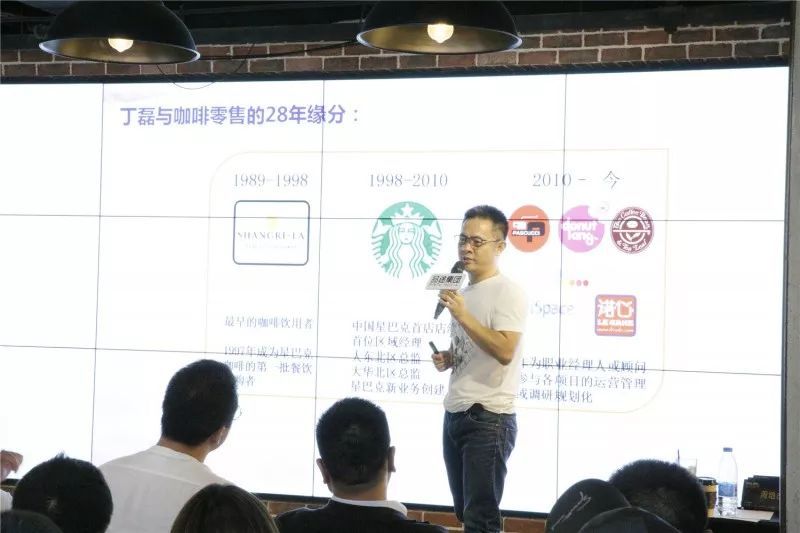
Ding Lei, manager of Starbucks' first store in China.
You still remember that in 2009, Ding Lei found that only six out of 49 consumers knew about Starbucks and only one had been to Starbucks. In 2009, the turnover of the first Starbucks coffee shop was only 21000 yuan, while that of the second coffee shop dropped to 16000 yuan. When Ding Lei was in charge of the northeast region, sales were 3000 yuan a day. At that time, Starbucks focused on the brand and store investment, until the coffee market ushered in the second wave in 2005, Starbucks' cultivation of the Chinese coffee market achieved phased results.
According to data, the current sales of coffee market is 53.1 billion yuan, growing at an annual growth rate of 35%. Sales are expected to reach 109.7 billion yuan in 2021. Starbucks alone accounts for 50% of the market.
Starbucks, in the name of "professional coffee chain brand", carries out chain control from coffee planting and production, supply chain, equipment and materials to chain store operation. the overseas operation of high intellectual property rights and patent rights has been quite large and well-known. However, it is undeniable that Starbucks' position is being challenged by all-round Chinese newcomers.
First of all, the pattern brought about by the change of scene is changeable. From single scene to compound scene, coffee consumption used to focus on office and business meetings, but now coffee is drunk at home, dating and shopping, thus bringing about a diversity of coffee consumption patterns, that is to say, online and offline. Store + e-commerce operation.
In the current coffee pattern, Ding Lei believes that many professional coffee brands are still relatively conservative under the mode of Internet operation, and there are many opportunities to be improved. For Starbucks, trying to cut into the takeout platform and selling coffee products online is a change.
Second, the change of marketing. The establishment of a mature membership system is the main marketing channel for traditional coffee brands. Ding Lei pointed out that member marketing is no longer enough to support coffee brands to survive in the current era, and has evolved into marketing methods such as fan marketing, community marketing and content marketing.
Ding Lei said that member marketing is one-way, fan marketing and social marketing are two-way marketing, while interactive content marketing brings emotion and meaning, which is also one of Starbucks' future work.
Third, the change of the business circle. Starbucks is already exploring business circles to community areas, and innovations in stores have brought Starbucks more efficiency, such as a store that can sell 1500 cups of coffee a day, which used to be a 200,300 square meter professional coffee shop.
Having personally experienced Starbucks' changes in coffee for 28 years, Ding Lei stressed that in today's competition, occupying ideas is more important than occupying the market. The major coffee brands must build brands, between brands are not competitors, but competition teammates.
Pan Yuxin, a founding partner of Lang ran Capital, points out that the essence of coffee retailing is from physical needs to social needs to emotional needs. At present, China's coffee market is divided by major players, and a new store is opened every 45 minutes across the country. At the same time, several stores have closed down, the positioning of the coffee market is vague, and the market pattern is not yet fully established.
However, according to the current market pattern, Chinese coffee mainly presents four major commercial types: fragment life type, cost-effective type, cross-border drainage type and ultimate experience type.
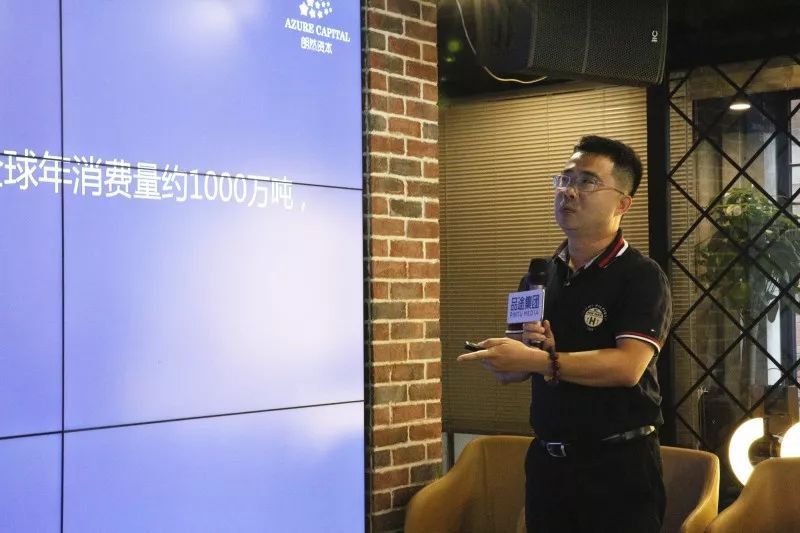
Pan Yuxin, founding partner of Lang ran Capital
The target customer group of the fragment life style is the rich and idle customers, the supplier of the product makes the supplier into a platform model, the value is to save the customer's time, and the main source of income is higher gross margin and B-end flow fees. this is the essence of this subdivision industry. Judging from the current trend, the proportion of consumers going to offline small stores is increasing.
The high performance-to-price model is aimed at the group of customers who have no money and leisure. Here, it does not mean that the income is high or low, the core is cheaper, the customer label is simply standardized, and if you want to be cheap, you have to be large, standard, and there can be no differentiation. Xiaomi is a typical such model, similar to the Amazon model, the quality of design technology continues to do, let the customer experience come up, to achieve the rapid growth of the enterprise.
Cross-border drainage is aimed at poor, rich, leisure customers, by finding a flow depression, pull a large number of customers in, rely on another business model to do, this cost is the drainage cost.
The ultimate experience type is aimed at the rich and leisure customer group. The essence of the ultimate experience type is the upgrading of consumption, which lies in the overall upgrading of lifestyle, not just the consumption of high-end brands or products.
Generally speaking, the fragment life form is fast, the cost-effective is the province, the cross-border drainage type is the good and the province, the ultimate experience type is good.
Reveal the true format of boutique coffee
Making boutique coffee is said by many people in the industry that this is the future and real breakthrough of the coffee market. Is that really the case?
In Ding Lei's eyes, boutique coffee emphasizes the concept of boutique coffee, and what every coffee brand pursues for its products is boutique, which in essence is a relatively rare, relatively delicate, high unit price coffee. The model used in the process of providing to customers is more hand-made, emphasizing the flavor and taste of coffee, emphasizing personalization, and pursuing high quality and high unit price. This market is relatively small and small in China.

Li Fei, general manager of Bruno Coffee
Li Fei, general manager of Bruno Coffee, believes that boutique coffee is not only a flavor, but also a way of life, but also a spiritual need, but also a cultural need. These contents are actually derived from boutique coffee and are not limited to products.
What is the ecology of boutique coffee?
So how does boutique coffee become a new ecology under the new retail? Li Fei doesn't think it's that simple.
The so-called ecology refers to a complete system with vitality and sustainable development. Among them, the complete system is extremely important, including coffee planting, roasting, consumer stores, consumer market, coffee estate derivative industry, supply chain, art and cultural content and so on. At present, there is no enterprise in the coffee market that can create a complete, vital and sustainable system, that is, the new ecology of coffee.
In the complex and rapidly changing market environment, boutique coffee brands especially need to find a good balance between their own stability and breakthrough. Specifically, products, services and the environment are the basis of everything. Do a good job offline first, and the direction and road must be determined before you can keep it straight. If you can keep it straight, you can add flowers. If you give up the root and focus on the so-called Internet gimmicks, you can't last long.
For boutique coffee, the competitiveness of boutique coffee is the lifestyle, cultural influence and the strength of the overall brand. Li Fei said that Bruno does not make coffee, but a lifestyle of leisure, relaxation and full freedom, which is only presented through coffee; the brand with coffee as the carrier forms a culture, which is called boutique coffee.
So who is the main target market for boutique coffee? Li Fei said that the post-90s and post-00s can be used as a breakthrough in this subdivision field. On the face of it, post-90s and post-00s are hedonistic, unrestrained, impulsive and wasteful, but consumer research shows that they are hedonistic because they have more choices and more time, including more money; they have a more subdivided self-perception, a more rational attitude and a more emphasis on quality experience.
The real standard of fine coffee
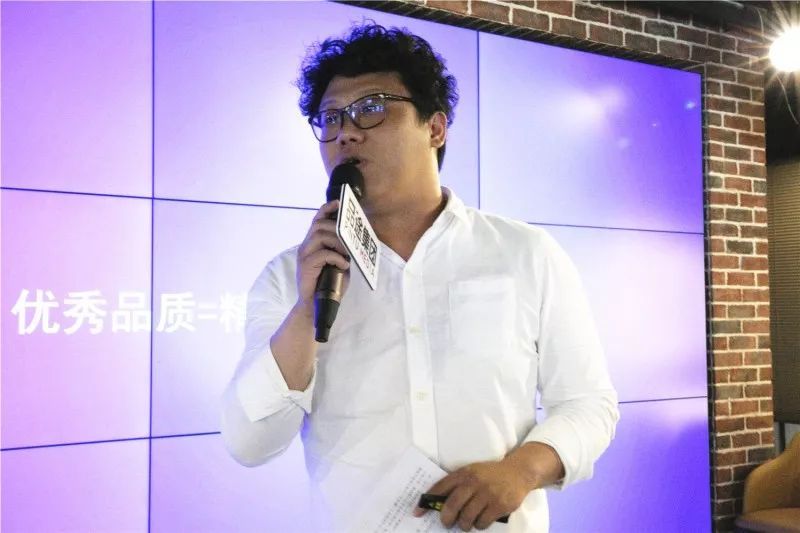
Zhu Kevin, Brand Manager of Shanghai Shengyun Industrial Coffee
Zhu Kaiwen, brand manager of Shanghai Shengyun Industrial Coffee, has his own understanding of boutique coffee. He believes that boutique coffee is actually not equal to mass-produced coffee, nor is it very expensive coffee, there is also a temperature difference, and it is not coffee with an inexplicable fragrance, but boutique coffee beans and boutique cafes.
Boutique coffee beans are products created together by the whole industrial chain, and each cup is an extension of the supply chain; boutique cafes are the presentation of the industrial chain throughout the industry, so that the entire industrial chain progress and upgrading.
As for the question of whether quality or marketing should be given priority to boutique coffee, Zhu Kevin said that when polishing the quality of a product, it is necessary to create an image of him, such as catchphrase, image, and its story. in doing so, we are already doing marketing and brand positioning.
It is worth noting that marketing is not blindly exaggerated, boast, each product is short will be long, so it is true. Coffee practitioners should deeply explore and correctly understand the needs of consumers, for example, they can show the technology of brewing boutique coffee, can also present the aesthetics and utensils of boutique coffee, and can also create boutique cafes from the aesthetics of boutique cafes.
The ultimate format other than boutique coffee
Lai Cup coffee CEO Zhou Peijie also believes that it is always the standardized format that accounts for the majority of the coffee market, such as Starbucks' selection stores, and boutique coffee is always a minority. It is worth mentioning that in the standardized format, industrialization can be better than store standardization, in which the autonomous intelligent terminal is the extreme of this format.
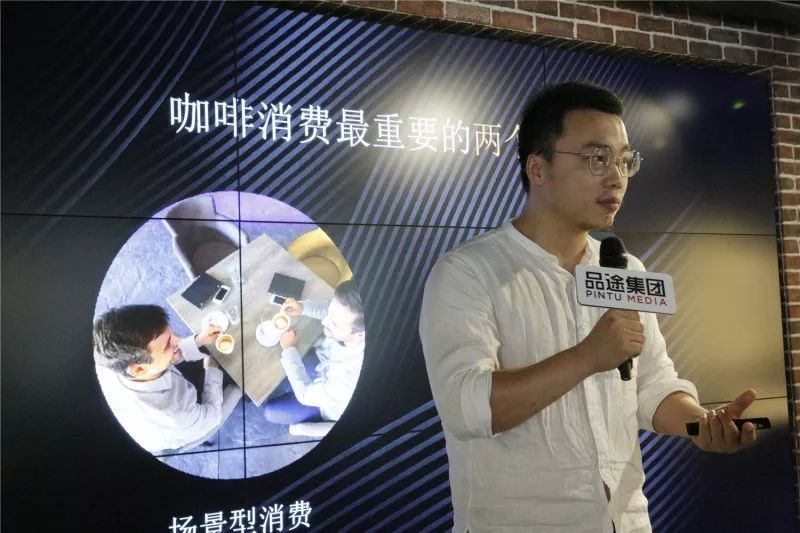
Lai Cup Coffee CEO Zhou Peijie
Zhou Peijie pointed out that in addition to scene consumption or immediate consumption, there is also impulse consumption. With regard to impulse consumption, there are two main characteristics: consumers emphasize availability and access efficiency; corresponding to the market, instant coffee and takeaway coffee. At this stage, instant coffee occupies a large market share.
Based on this, Zhou Peijie believes that RTD coffee and instant coffee are classic mainstream formats, which belong to traditional fast consumer products, among which there are four major characteristics: industrial large-scale production, large-channel logistics distribution, central marketing, standard experience of the traditional retail model (it is the classic play of RTD coffee and instant coffee fast consumer products).
To put it simply, the most obvious and direct phenomenon that self-service coffee can produce is that production is consumption, that is to say, consumption and production occur at the same time when users buy coffee.
Production is consumption has three cores, 1) intelligent and ingenious quality of the machine terminal. In foreign countries, this format is already very mature, and the biggest difference is that Europe and Japan are just a functional machine. When you put it there, you just treat it as a waste or drink and buy it if you need it. In China, you can interact with consumers. 2) the organization of raw material supply chain adapted to the new form. 3) data-driven consumer interaction and scenario operation.
There are hidden rules for coffee investment?
According to statistics from Pindu think tank, the popularity of China's coffee venture capital market continued to increase from 2015 to 2017, and showed a high growth trend in 2018. As of May this year, the amount of venture capital in China's coffee market has reached 322 million yuan, twice the total financing for the whole year of 2017.
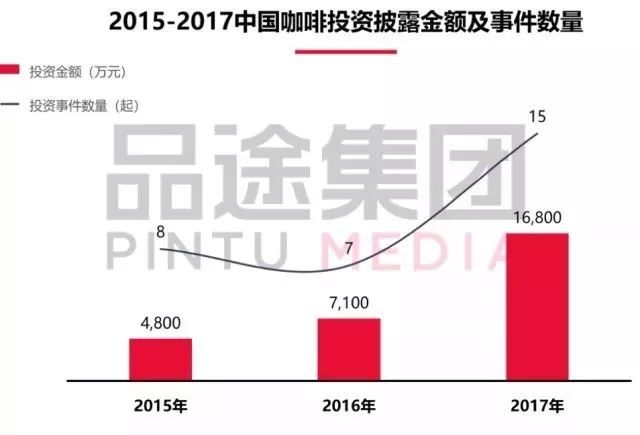
Source: analysis of Enterprise name Film and Pindu think Tank
In more detail, 33 coffee chains, 28 self-service coffee machines, 10 coffee machine developers, 4 coffee takeout, 2 mobile coffee carts, 2 coffee suppliers and 1 coffee culture operator have all received financing.
Coffee is ushering in a capital vent.
Pan Yuxin, a founding partner of Lang ran Capital, deeply exposed the capital's preference for coffee projects, of which the biggest "hidden rule" is: cross-border. Pan Yuxin believes that:
First of all, the coffee project must let investors see the ceiling high enough, and the ceiling of the coffee shop itself is not high, just being a coffee shop means that your market capacity is not 100 million. Coffee projects with successful comprehensive financing have basically achieved cross-border integration.
Second, we must have a deep moat, which can be understood as controlling the industrial supply chain, and the core is digitization.
Third, overcome three major obstacles: position resistance, search resistance, and social resistance. In the coffee industry, the best way to overcome the position resistance is the unmanned vending machine.
In Pan Yuxin's eyes, a good project should be able to use mobile phone mode, and only with mobile phones can it be digitized. Without the digitization behind it, it is impossible to be more effective than competitors; and it is small and beautiful, not too big, because in the end, you have to achieve rapid development by joining. Finally, to be able to make money from retail, this does not mean simply making money by buying and selling coffee. The data may make money, and the venue operation may also derive additional products.
Thank you for reading.
Important Notice :
前街咖啡 FrontStreet Coffee has moved to new addredd:
FrontStreet Coffee Address: 315,Donghua East Road,GuangZhou
Tel:020 38364473
- Prev

Does the aroma of coffee have special effects? Scientists reveal the unexpected effect of coffee aroma
Professional coffee knowledge exchange more coffee bean information please follow the coffee workshop (Wechat official account cafe_style) according to the medical information website MedicalXpress, experts from the Stevens Institute of Technology in the United States pointed out that the aroma of coffee can improve people's performance in performing analytical tasks, such as GMAT (graduate management admission required to apply to foreign business schools).
- Next
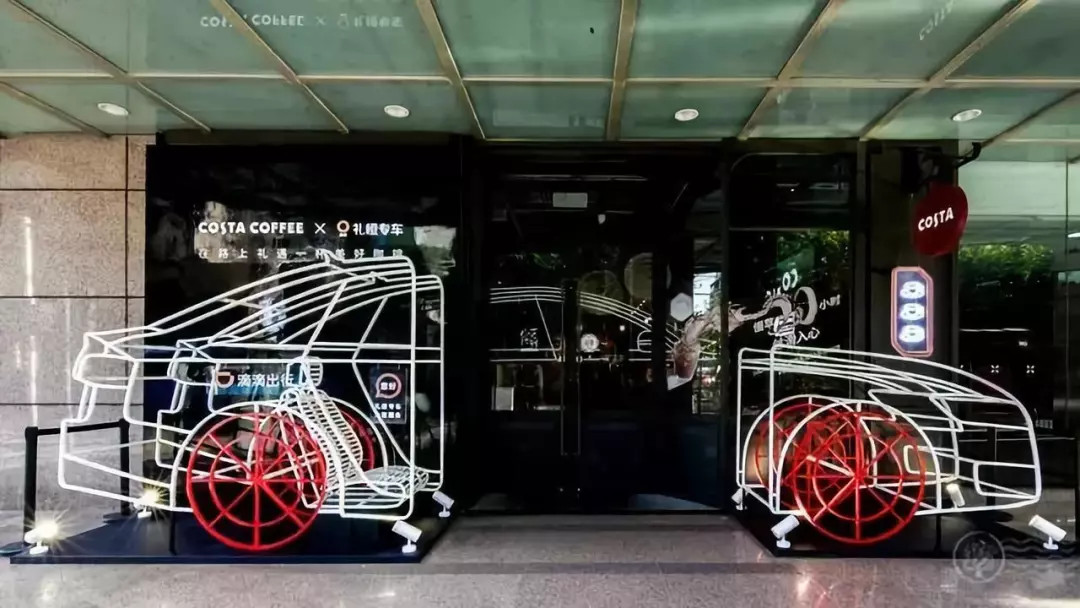
DiDi's new online celebrity "car" cafe is very popular! Have you clocked in?
Professional coffee knowledge exchange more coffee bean information please follow the coffee workshop (Wechat official account cafe_style) Source: catering Vision (ID:shijie-henda) author: carina has made a big move after Didi Premier Taxi renamed the gift orange chauffeured car and launched the new brand LOGO! DiDi with a gift orange chauffeured car and xCOSTA COFFEE opened two 300ping cars in Beijing and Shanghai.
Related
- Why does hot American coffee taste bitter? Difference in proportional concentration between hot American and ice American
- Is espresso stored overnight in the refrigerator harmful to your body? Is frozen coffee better than freshly ground coffee?
- What parameters and proportions of water temperature should be used to grind and brew fresh coffee beans? Why can't I drink freshly roasted coffee right away?
- Customers have "changed" Manner's new products! Shop assistant: Please don't mess around!
- Remove sockets in customer areas at Starbucks stores?! Netizen: I won't go if I really tear it down
- What is the difference between the taste steps of sun-dried coffee and washed coffee? Why is sun-cured coffee sweeter and washed coffee sour?
- The recipe for salty grapefruit dirty is revealed! Coffee Festival salty grapefruit dirty coffee making materials parameters ratio milk share!
- How about the flavor of Sunlight 74158 at Sidamo Banshaha Mathieu Processing Factory in Ethiopia? 74158 Share the proportion of coffee brewing parameters!
- What effect does Italian American coffee with filter paper have? Will coffee taste better if it is put on filter paper at the bottom of the powder bowl?
- What is the color difference in coffee beans? What are the characteristics of honey processed coffee beans? Why are the anaerobically treated coffee beans uneven in color?

